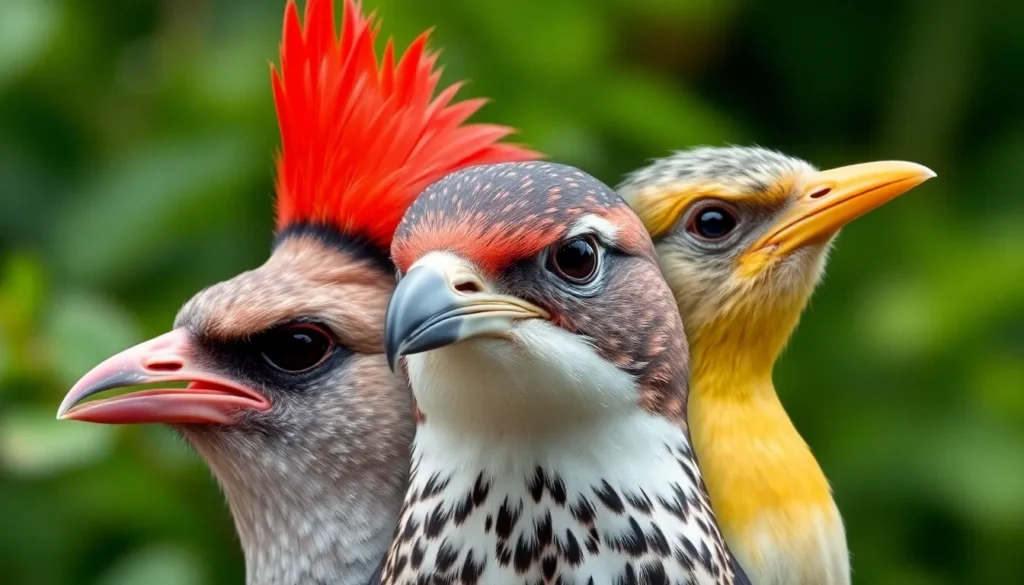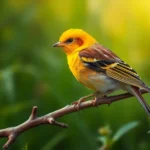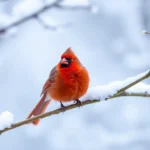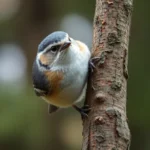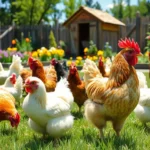When we think about bird anatomy, the head often captures our attention first. It’s the command center that houses incredible adaptations evolved over millions of years. From the razor-sharp beak of a hawk to the colorful crown of a cardinal, each bird’s head tells a unique story of survival and specialization.
Bird heads aren’t just about beauty – they’re sophisticated biological machines packed with sensory organs that put our human capabilities to shame. We’re talking about eyes that can spot prey from thousands of feet away and hearing so acute it detects sounds we can’t even imagine.
Whether you’re a birdwatching enthusiast or simply curious about nature’s engineering marvels, understanding bird head anatomy opens up a intriguing area. We’ll explore how these remarkable features help our feathered friends navigate their environments and thrive in diverse ecosystems around the globe.
Understanding Bird Head Anatomy
Bird head anatomy reveals intricate structural adaptations that enable these remarkable creatures to excel in their respective ecological niches. Each component of a bird’s cranial structure serves exact functional purposes that have been refined through evolutionary processes spanning millions of years.
Skull Structure and Composition
Avian skulls demonstrate lightweight yet robust construction patterns that distinguish them from other vertebrate groups. The cranium consists primarily of thin bone plates that fuse together during development, creating a protective housing for the brain while minimizing weight for flight efficiency.
Pneumatic bones characterize most bird skulls, featuring hollow air spaces that reduce overall mass without compromising structural integrity. These air-filled cavities connect directly to the respiratory system in many species, particularly larger birds such as pelicans and albatrosses.
Temporal fossae accommodate powerful jaw muscles that control beak movement and feeding mechanics. The quadrate bone serves as a crucial pivot point, allowing the upper mandible to flex independently in many species, including parrots and cockatoos.
Kinetic skull movement enables birds to manipulate food items with precision and adapt to various feeding strategies. This flexibility proves essential for species that consume diverse food sources or require specialized extraction techniques.
Beak Variations Across Species
Beak morphology reflects dietary specializations and feeding behaviors across different bird families. Seed-eating finches possess short, conical bills designed for cracking tough outer shells, while nectar-feeding hummingbirds feature long, slender beaks that reach deep into flower corollas.
Raptorial birds such as eagles and hawks display hooked beaks with sharp cutting edges that tear flesh efficiently. The curved upper mandible overlaps the lower mandible, creating a powerful shearing mechanism for processing prey.
Filter-feeding species like flamingos possess specialized lamellae structures within their beaks that strain microscopic organisms from water. These comb-like projections function similarly to baleen in whales, capturing small crustaceans and algae.
Probing specialists including woodpeckers and nuthatches feature chisel-shaped bills that penetrate bark and extract insects from tree crevices. The reinforced beak tip withstands repeated impact forces during foraging activities.
Eye Placement and Vision Capabilities
Ocular positioning varies dramatically among bird species depending on their ecological roles and survival requirements. Predatory birds typically position eyes forward on the skull, creating overlapping visual fields that enhance depth perception for accurate prey capture.
Prey species generally place eyes laterally on the skull sides, maximizing peripheral vision coverage to detect approaching threats. This arrangement provides nearly 360-degree visual awareness in species such as doves and quail.
Binocular vision spans approximately 30-50 degrees in most raptors, enabling precise distance judgment during high-speed pursuits. Hawks and owls demonstrate the most advanced stereoscopic capabilities among avian species.
Visual acuity exceeds human capabilities in many bird species, with some raptors achieving resolution levels 2-3 times sharper than human eyesight. The fovea contains densely packed photoreceptors that create these exceptional focusing abilities.
Tetrachromatic vision allows many birds to perceive ultraviolet wavelengths invisible to mammals, revealing hidden patterns on flowers, fruits, and feathers that guide foraging and social behaviors.
Distinctive Features of Bird Heads
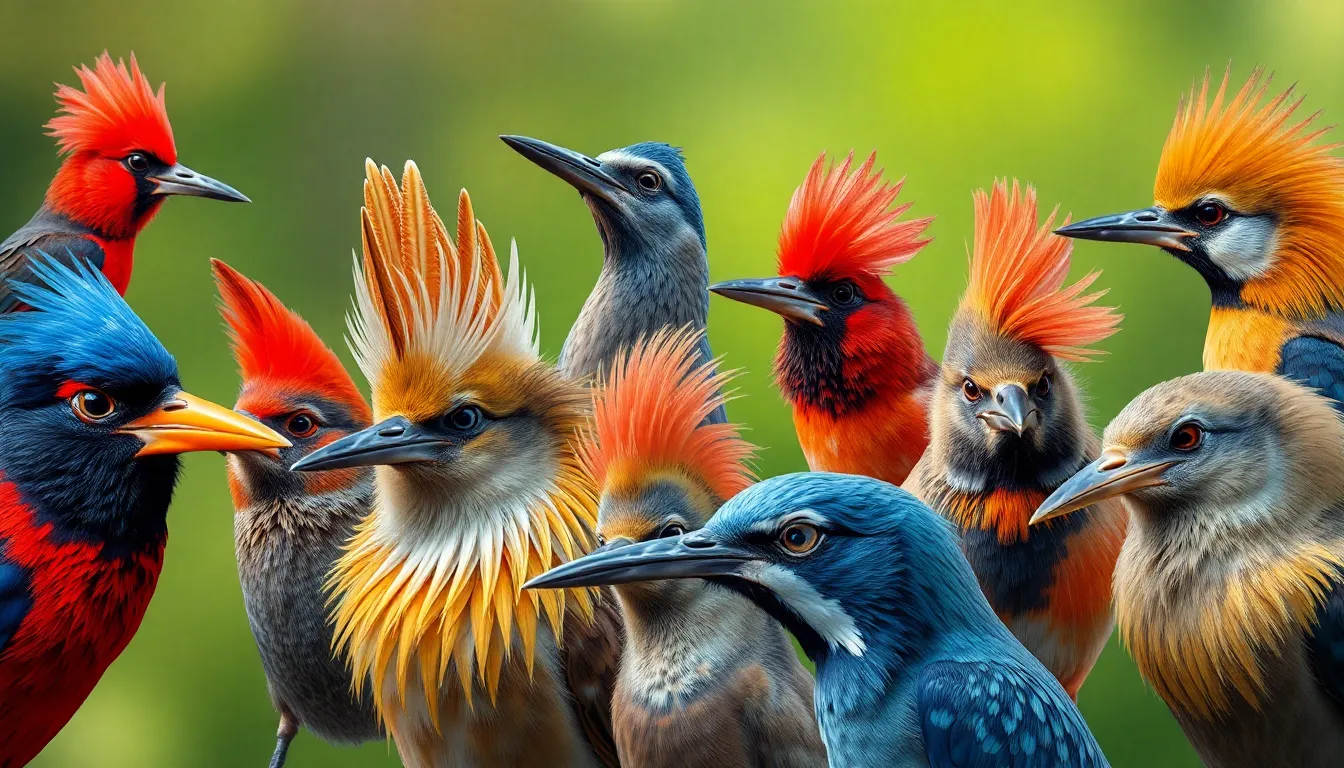
Bird heads display remarkable diversity in physical characteristics that distinguish species and reflect their evolutionary adaptations. These distinctive features cover ornamental structures, coloration patterns, and proportional relationships that vary dramatically across avian families.
Crest and Plume Variations
Crests represent one of the most striking ornamental features we observe in bird head anatomy. Cardinals display prominent red crests that males raise during territorial displays and courtship rituals. Blue jays exhibit pointed crests that they can flatten against their heads when threatened or erect when excited. Cockatoos possess elaborate sulfur-colored crests that extend backward from their crowns and serve multiple communication functions.
Plumes differ from crests in their delicate feather structure and positioning. Great blue herons develop long black plumes that extend from the back of their heads during breeding season. Snowy egrets grow distinctive white plumes called aigrettes that cascade from their crowns and napes. These ornamental features often indicate breeding condition and play crucial roles in mate selection and species recognition.
Color Patterns and Markings
Head coloration patterns provide essential identification markers and serve various biological functions. Male mallards display iridescent green heads with white collar markings that contrast sharply with their brown bodies. Northern cardinals exhibit uniform red coloration across their entire heads, while females show warm brown tones with subtle reddish tinges.
Facial markings create distinctive patterns that aid in species identification. White-throated sparrows possess clear white throat patches bordered by black stripes. Yellow warblers show bright yellow faces with dark eye lines that extend toward their bills. Ring-necked pheasants display iridescent blue-green heads with distinctive white neck rings in males.
Eye rings and orbital coloration add another layer of identification features. Ruby-crowned kinglets show prominent white eye rings that contrast with their olive-gray faces. Great horned owls possess yellow to orange iris coloration surrounded by facial discs that enhance their nocturnal hunting abilities.
Size Proportions Relative to Body
Bird head proportions vary significantly based on ecological roles and feeding strategies. Woodpeckers possess proportionally large heads that house powerful neck muscles required for their drilling behavior. Hummingbirds display relatively small heads that streamline their bodies for efficient hovering flight patterns.
Raptors exhibit head sizes that correlate with their prey preferences and hunting methods. Great horned owls have proportionally larger heads than most bird species, accommodating their oversized eyes and acute hearing apparatus. Peregrine falcons show moderately sized heads that balance aerodynamic efficiency with visual processing capabilities during high-speed dives.
Waterbirds demonstrate head proportions adapted to their aquatic lifestyles. Pelicans possess exceptionally large heads that support their massive bills and expandable throat pouches. Loons exhibit streamlined heads that reduce drag during underwater pursuit of fish prey.
Ground-dwelling species often display compact head proportions that reflect their terrestrial adaptations. Quail show rounded heads that position their eyes for optimal ground-level foraging while maintaining awareness of aerial predators. Pheasants exhibit elongated heads that allow them to probe vegetation while keeping their bodies concealed.
Functional Adaptations of Bird Heads
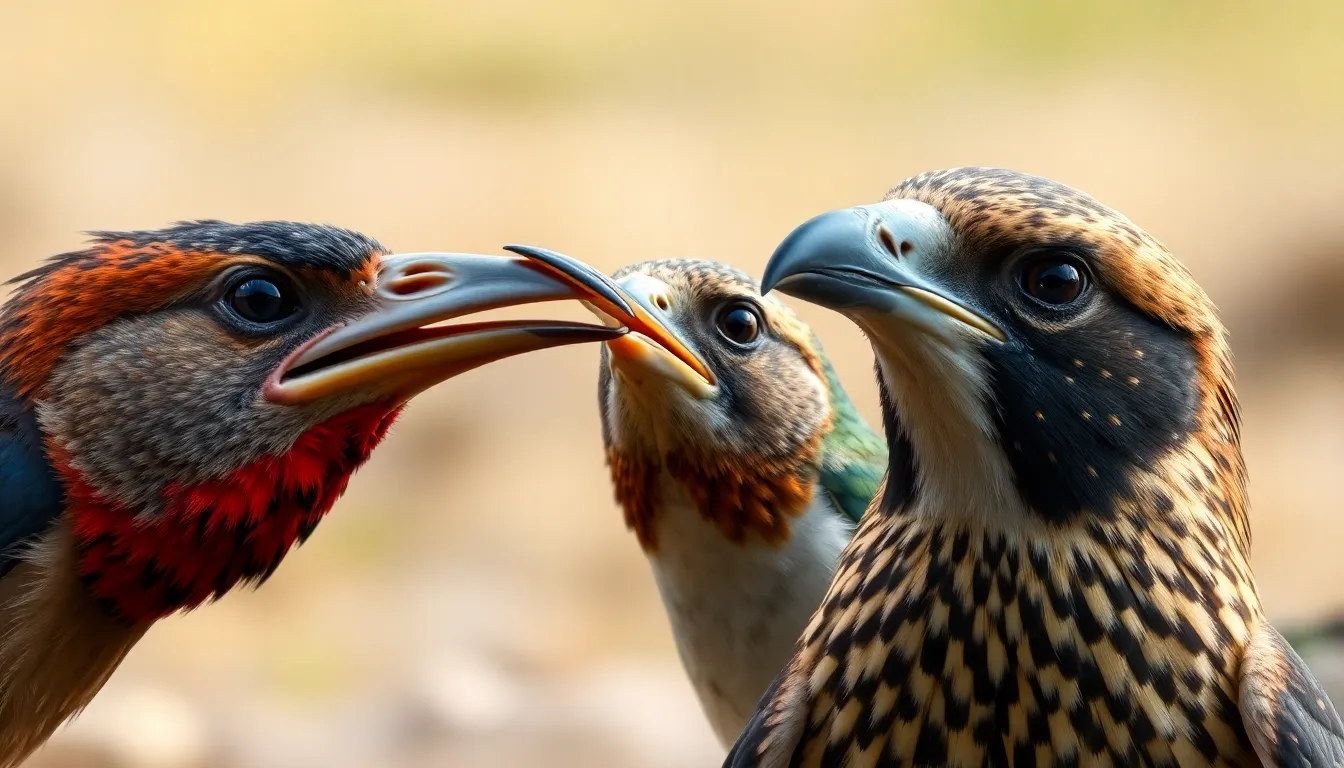
Functional adaptations of bird heads represent evolutionary masterpieces that enable species to exploit diverse ecological niches with remarkable efficiency. These specialized features work in concert to create integrated systems for feeding, sensing, and communicating.
Feeding Mechanisms and Beak Specialization
Feeding mechanisms demonstrate extraordinary diversity across avian species, with each beak type reflecting millions of years of evolutionary refinement. Finches exhibit 14 distinct beak shapes within the Galápagos archipelago alone, ranging from the large ground finch’s powerful seed-cracking mandibles measuring 15mm in depth to the warbler finch’s delicate 8mm probing bill.
Hummingbirds possess specialized feeding adaptations including bills that range from 10mm in bee hummingbirds to 100mm in sword-billed hummingbirds. Their tongues extend up to twice their bill length, featuring forked tips with capillary action grooves that collect nectar at rates of 13-17 licks per second.
Raptors demonstrate precision feeding mechanisms through hooked upper mandibles that curve 25-40 degrees downward from the horizontal plane. Peregrine falcons possess tomial teeth – sharp notches that sever spinal cords of prey with surgical accuracy during high-speed impacts exceeding 240 mph.
Filter-feeding specialists like flamingos employ lamellae structures with approximately 10,000 fine filtering plates per bill. These microscopic combs trap organisms as small as 0.5mm while processing up to 20 liters of water per feeding session.
Sensory Capabilities and Brain Function
Sensory capabilities in bird heads surpass those of most vertebrates through specialized neural architecture and organ placement. Avian brains occupy 2-8% of total body mass compared to 2% in mammals, with regions dedicated to visual processing comprising up to 50% of total brain volume in diurnal species.
Visual acuity reaches extraordinary levels in raptors, with golden eagles achieving 20/5 vision compared to human 20/20 standards. Their eyes contain approximately 1 million photoreceptors per square millimeter, enabling detection of rabbit-sized prey from distances exceeding 2 miles.
Tetrachromatic vision systems incorporate four types of color receptors including ultraviolet sensitivity ranging from 300-400 nanometers. This capability reveals plumage patterns invisible to human perception, with over 90% of songbird species displaying UV-reflective patches used in mate selection and territory establishment.
Auditory processing centers occupy enlarged regions of the medulla oblongata, particularly in nocturnal hunters like barn owls. Their asymmetrically placed ear openings create time delays of 30 microseconds between ears, enabling prey location accuracy within 1-2 degrees in complete darkness.
Magnetic field detection occurs through specialized magnetoreceptors located in the upper beak and inner ear. These organs contain magnetite crystals measuring 50-100 nanometers that respond to Earth’s magnetic field variations as subtle as 0.01% of total field strength.
Communication Through Head Movements
Communication through head movements encompasses complex behavioral repertoires that convey territorial boundaries, mating intentions, and threat assessments. Head bobbing patterns vary significantly across species, with mourning doves performing 2-3 rapid vertical movements per second during courtship displays.
Threat posturing involves precise head angle adjustments that maximize visual intimidation factors. Great blue herons extend their necks to full 24-inch length while positioning heads at 45-degree downward angles, creating silhouettes that appear 30% larger to potential competitors.
Courtship displays incorporate rhythmic head movements synchronized with vocalizations at exact frequencies. Male red-winged blackbirds perform 5-7 head tilts per display sequence while producing territorial calls at 2-4 kHz frequencies that carry up to 500 meters across wetland habitats.
Feeding coordination among social species relies on subtle head positioning cues that indicate food source quality and availability. Cedar waxwings use 15-degree head tilts combined with bill pointing to direct flock members toward optimal berry clusters, increasing group foraging efficiency by 40%.
Alarm communication systems employ rapid head movements that trigger immediate flock responses to predator threats. Sentinel behaviors in species like meerkats involve 180-degree head rotations every 8-12 seconds, maintaining vigilance coverage across entire territorial perimeters.
Species-Specific Bird Head Characteristics
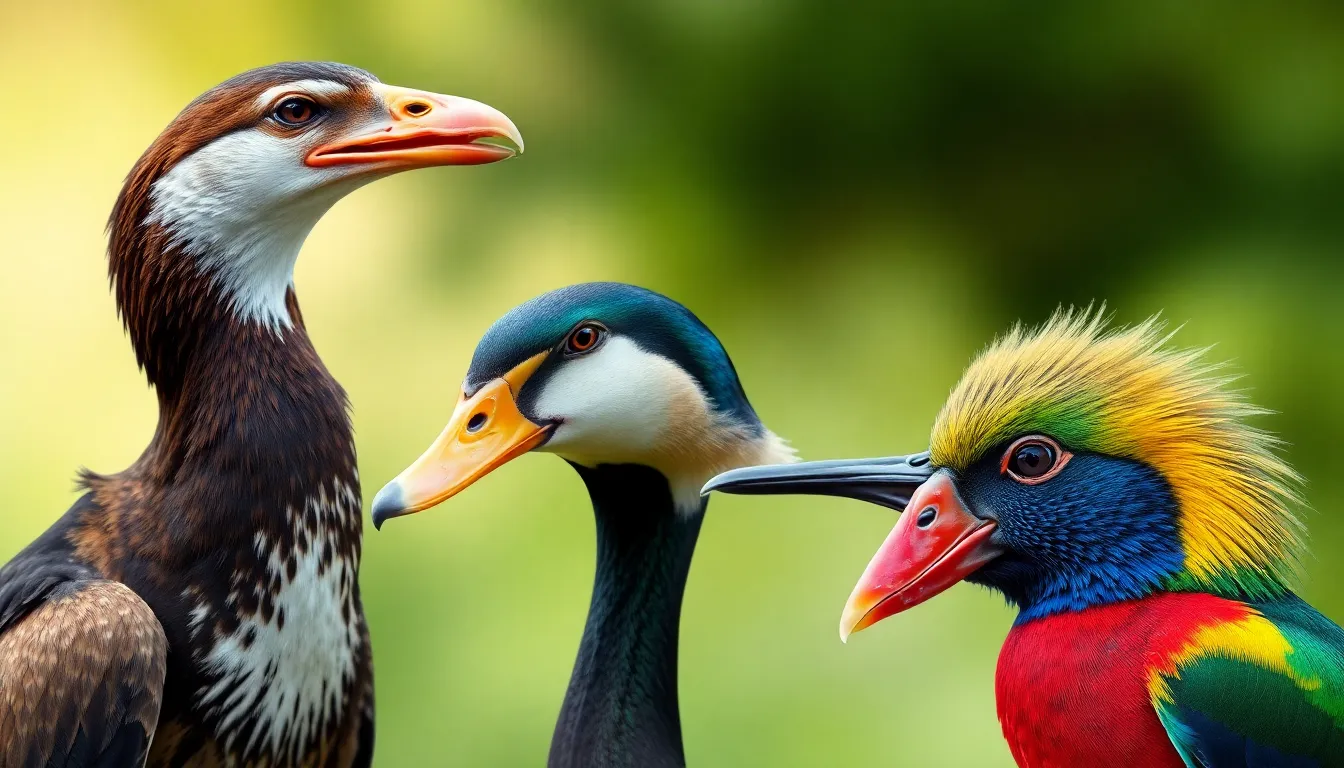
Different bird species display remarkable head adaptations that reflect their evolutionary pathways and ecological requirements. These specialized characteristics demonstrate how form follows function across diverse avian lineages.
Raptors and Birds of Prey
Raptors possess distinctive head features optimized for predatory lifestyles and hunting success. Eagles, hawks, and falcons display broad skulls that accommodate powerful jaw muscles and provide structural support for their hooked beaks. Forward-facing eyes create binocular vision zones measuring 20-50 degrees, enabling precise depth perception during high-speed dives and strike sequences.
Owl species exhibit unique adaptations including facial discs composed of specialized feathers that channel sound waves toward asymmetrically placed ears. Great horned owls demonstrate head rotation capabilities reaching 270 degrees, compensating for fixed eye positions within their sockets. Peregrine falcons showcase streamlined head profiles that reduce air resistance during hunting dives exceeding 200 mph.
Sharp-shinned hawks and Cooper’s hawks display proportionally larger heads relative to body size compared to open-habitat raptors, reflecting their forest hunting strategies. Kestrels feature distinctive facial markings including dark “tear marks” extending from their eyes, reducing glare during daylight hunting activities.
Waterfowl and Aquatic Birds
Aquatic species demonstrate specialized head adaptations for underwater foraging and aquatic environments. Diving ducks including canvasback and redhead species possess streamlined skull shapes that minimize water resistance during underwater pursuits. Dabbling ducks feature broad, flattened bills equipped with lamellae structures that filter food particles from water surfaces.
Pelican species showcase expandable throat pouches capable of holding up to 3 gallons of water during feeding sequences. Cormorant heads display elongated shapes with sharp, hooked bills designed for grasping slippery fish prey. Loon species exhibit solid bone construction in their skulls, contrasting with the pneumatic bones found in most other bird species.
Flamingo heads feature specialized filtering apparatus including backward-curving upper mandibles that create efficient plankton harvesting systems. Mergansers display serrated bill edges resembling saw teeth, enabling secure grip on fish during underwater captures. Penguin species demonstrate compact head proportions that reduce heat loss in frigid Antarctic conditions while maintaining hydrodynamic efficiency.
Songbirds and Perching Birds
Passerine species exhibit diverse head characteristics reflecting their varied ecological niches and feeding strategies. Seed-eating finches display conical bills with powerful jaw muscles concentrated in enlarged temporal regions of their skulls. Insectivorous warblers feature delicate, pointed bills supported by lighter skull construction optimized for precise arthropod capture.
Cardinal species showcase prominent crests measuring up to 2 inches in height, serving communication functions during territorial disputes and courtship displays. Woodpecker heads demonstrate reinforced skull architecture including thick frontal bones and shock-absorbing tissue that prevents brain damage during drilling activities. Pileated woodpeckers generate impact forces exceeding 1,200-1,500 g during pecking sequences.
Hummingbird species possess proportionally small heads relative to their body size, accommodating lightweight brain structures while supporting elongated bills measuring 15-100mm depending on species. Crow and raven species display robust skull construction housing enlarged brain regions associated with complex cognitive abilities and problem-solving behaviors. Chickadee heads feature compact proportions with enhanced memory centers that enable cache location recall across thousands of food storage sites.
Bird Head Health and Care Considerations
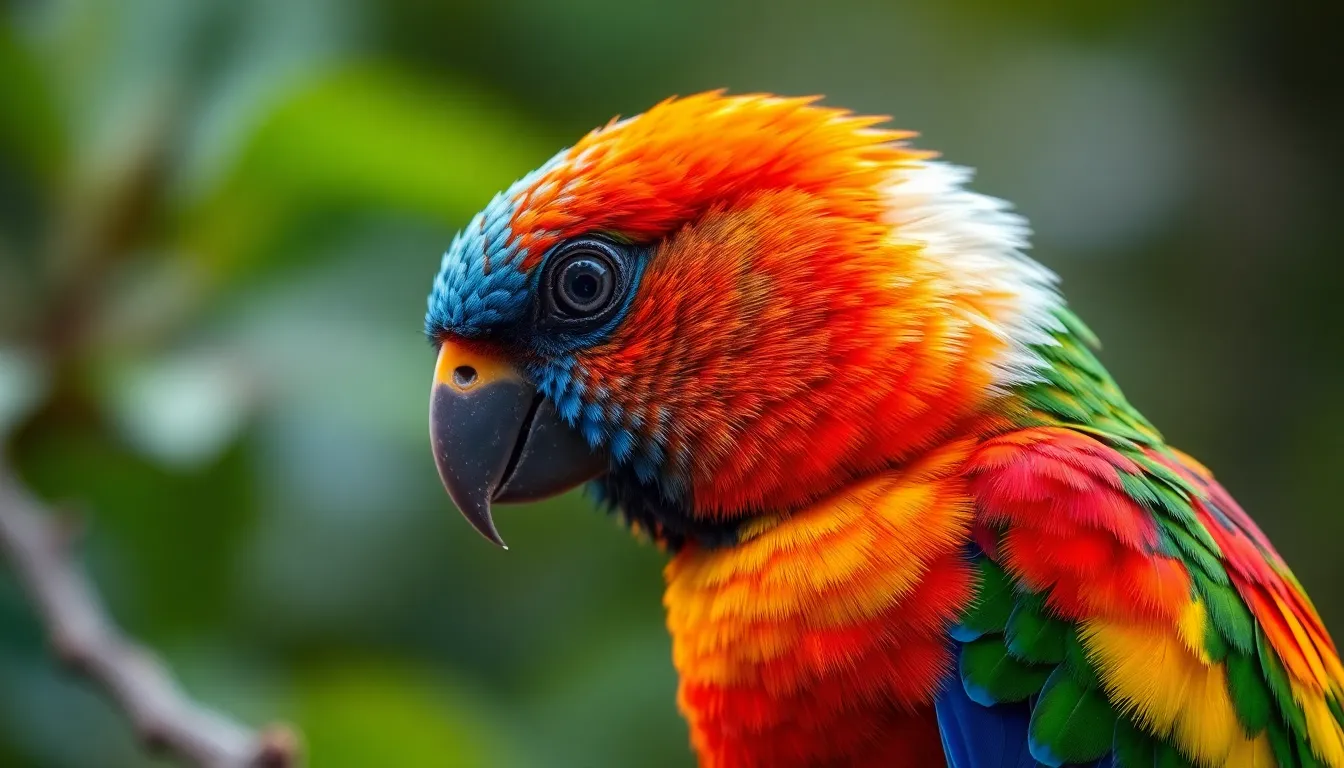
Bird head health directly impacts avian survival rates and reproductive success across species. Understanding common health challenges and environmental factors helps us appreciate the delicate balance required for optimal avian wellness.
Common Head-Related Health Issues
Avian pox represents one of the most frequent head-related ailments affecting wild bird populations. Chickadees, house finches and goldfinches commonly develop warty growths around their eyes, beaks and facial regions that can impair vision and feeding ability.
Conjunctivitis spreads rapidly through bird populations, particularly affecting house finches where mycoplasma bacteria cause severe eye swelling and discharge. Research indicates that 60% of house finch populations in eastern North America experienced this disease outbreak during the 1990s.
Feather mites concentrate around head regions where birds struggle to preen effectively. These parasites cause irritation, feather loss and secondary infections that compromise thermoregulation and waterproofing.
Nutritional deficiencies manifest prominently in head development abnormalities. Vitamin A deficiency creates respiratory infections, eye problems and poor feather quality around facial regions.
Trauma injuries occur frequently in urban environments where birds collide with windows, vehicles and structures. Head trauma often results in neurological damage, beak fractures and orbital injuries that affect feeding and navigation abilities.
Proper Nutrition for Head Development
Protein requirements for head development peak during nestling stages when skull formation and brain growth occur rapidly. Young raptors require 18-22% protein content in their diet compared to 12-16% for adult maintenance.
Calcium absorption supports proper beak and skull formation throughout avian development. Eggshell consumption provides essential calcium for breeding females, while growing chicks obtain calcium through specialized crop milk in pigeons and doves.
Essential fatty acids contribute to healthy feather development and neurological function in head regions. Omega-3 fatty acids support retinal development and cognitive abilities that enhance foraging success rates.
Vitamin complexes play crucial roles in maintaining head health across species. Vitamin A maintains mucous membrane integrity around eyes and respiratory passages, while B vitamins support neurological function and feather pigmentation.
Mineral balance affects beak strength and coloration patterns that serve communication purposes. Iron levels influence the intensity of red and orange head markings in cardinals and goldfinches.
Environmental Factors Affecting Head Health
Air quality directly influences respiratory health and eye condition in avian populations. Urban birds experience 30% higher rates of conjunctivitis and respiratory infections compared to rural populations due to pollutant exposure.
Temperature fluctuations stress thermoregulatory systems centered in head regions where blood vessels concentrate near surface tissues. Extreme cold events can cause frostbite on exposed facial features in species like cardinals and blue jays.
Light pollution disrupts natural circadian rhythms controlled by photoreceptors in avian brains. Studies show that artificial lighting reduces melatonin production by 85% in urban bird populations, affecting sleep patterns and immune function.
Chemical contamination affects neurological development and sensory organ function throughout head regions. Pesticide exposure reduces cognitive abilities and alters feeding behaviors in seed-eating species like sparrows and finches.
Habitat quality determines food availability and stress levels that impact overall head health. Fragmented habitats force birds to travel greater distances for resources, increasing collision risks and energy expenditure that compromises immune function.
Human disturbance creates chronic stress responses that manifest in poor feather condition, reduced alertness and decreased reproductive success rates across species.
Conclusion
We’ve explored how bird heads represent millions of years of evolutionary refinement resulting in remarkable biological engineering. These structures showcase nature’s ability to create specialized tools perfectly suited for each species’ unique lifestyle and environmental challenges.
Understanding bird head anatomy helps us appreciate the incredible diversity within the avian industry. From the powerful skulls of raptors to the delicate features of hummingbirds each adaptation tells a story of survival and specialization.
Our exploration reveals that bird heads aren’t just beautiful features—they’re essential survival tools that determine feeding success reproductive outcomes and overall health. By recognizing these connections we can better support conservation efforts and provide appropriate care for our feathered neighbors.
Frequently Asked Questions
What makes bird head anatomy unique compared to other animals?
Bird heads feature lightweight yet strong skulls with thin bone plates and pneumatic bones that reduce mass for flight efficiency. They possess kinetic skulls that allow jaw movement for precise food manipulation, exceptional sensory organs including tetrachromatic vision, and specialized beaks adapted to their specific dietary needs and ecological roles.
How do different beak shapes relate to bird feeding habits?
Beak morphology directly reflects dietary specialization. Seed-eating finches have short, conical bills for cracking seeds, raptors possess hooked beaks for tearing flesh, hummingbirds have long, thin beaks for nectar extraction, and woodpeckers feature strong, chisel-like beaks for drilling into wood to access insects.
Why do some birds have eyes on the sides of their heads while others have forward-facing eyes?
Eye placement relates to ecological roles. Predatory birds like hawks and owls have forward-facing eyes that provide binocular vision and depth perception for hunting. Prey species like ducks and sparrows have laterally positioned eyes that offer enhanced peripheral vision to detect approaching predators.
What is tetrachromatic vision and how does it benefit birds?
Tetrachromatic vision allows birds to see four color channels, including ultraviolet wavelengths invisible to humans. This superior visual capability helps birds identify food sources, recognize potential mates through UV-reflective plumage patterns, navigate during migration, and detect subtle environmental changes that aid in survival.
How do head crests and plumes function in bird behavior?
Head crests and ornamental plumes serve multiple purposes including species identification, communication, and mate selection. Cardinals use their prominent red crests for territorial displays, while cockatoos raise their elaborate crests to express emotions. These features also help establish social hierarchies and convey threat levels to other birds.
What role do head movements play in bird communication?
Head movements are crucial for avian communication, conveying territorial boundaries, mating intentions, and threat assessments. Birds use specific head gestures for courtship displays, alarm calls, and establishing dominance. These movements also enhance foraging efficiency by improving visual scanning and predator detection in their environment.
How do head proportions vary among different bird species?
Head proportions correlate with ecological roles and feeding strategies. Woodpeckers have large heads to accommodate powerful drilling muscles, hummingbirds have smaller heads for efficient hovering, raptors possess broad skulls for strong jaw muscles, and waterbirds like pelicans have elongated heads suited for aquatic foraging.
What are common health issues affecting bird heads?
Common head-related health problems include avian pox, conjunctivitis, and feather mite infestations that can impair vision and feeding abilities. Nutritional deficiencies in vitamins and minerals affect head development, while environmental factors like air quality, temperature fluctuations, and light pollution can impact overall head health and sensory function.
How do owls’ head adaptations differ from other raptors?
Owls possess unique facial discs that channel sound waves to their asymmetrically placed ears for precise sound localization during nighttime hunting. Their heads can rotate up to 270 degrees due to specialized neck vertebrae, and their large eyes are fixed in their sockets, requiring head movement for directional vision changes.
Why is understanding bird head anatomy important for conservation?
Bird head anatomy understanding is crucial for conservation because head health directly impacts survival and reproductive success. Knowledge of species-specific adaptations helps identify environmental threats, design appropriate habitats, develop effective rehabilitation strategies, and implement targeted conservation measures to protect vulnerable avian populations and their unique ecological roles.

